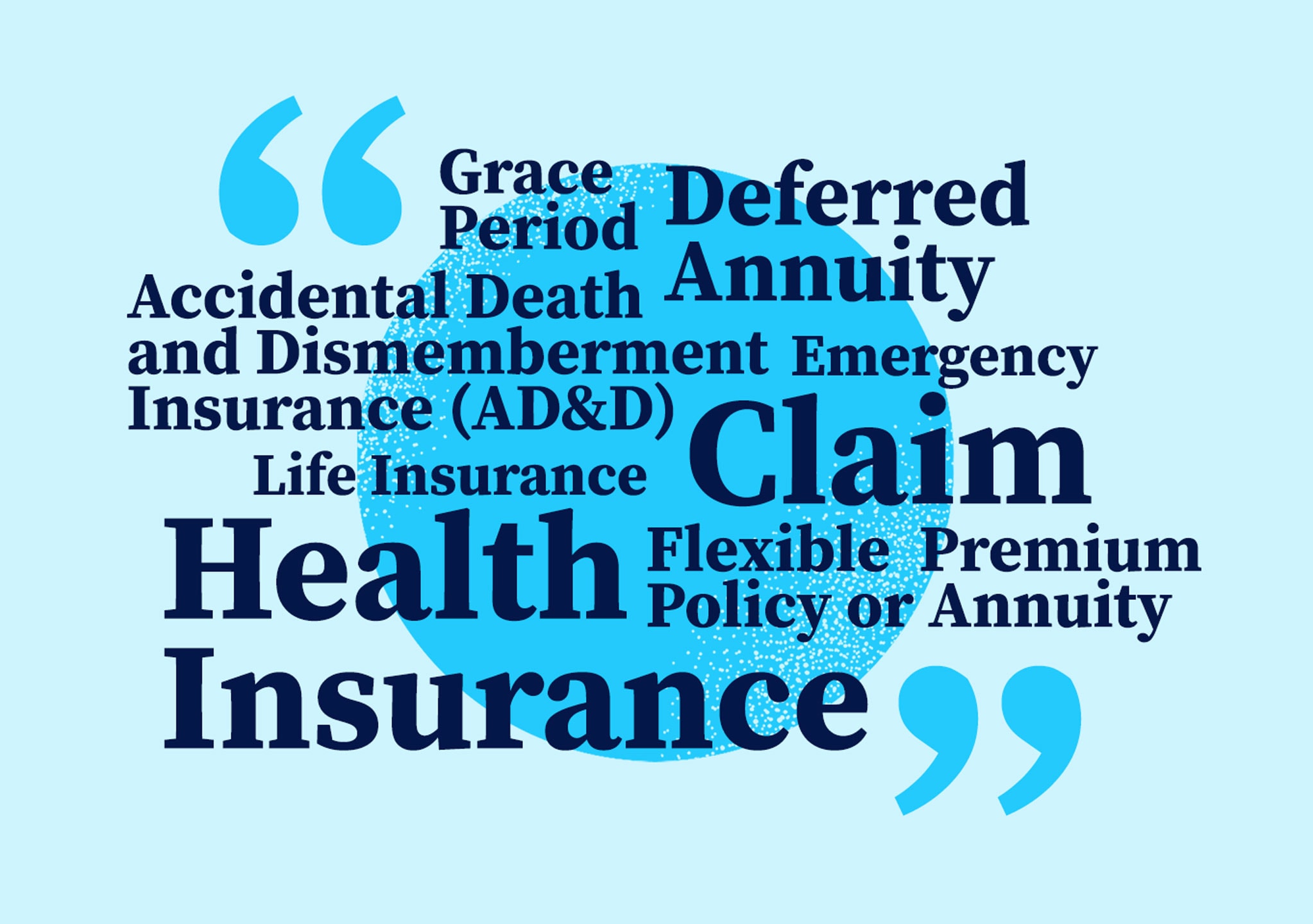Home>Finance>What Is The Purpose Of Having An Accelerated Death Benefit On A Life Insurance Policy?


Finance
What Is The Purpose Of Having An Accelerated Death Benefit On A Life Insurance Policy?
Modified: February 21, 2024
Discover the purpose of an accelerated death benefit on a life insurance policy to enhance your financial planning. Find out how this feature can provide a valuable lifeline during challenging times.
(Many of the links in this article redirect to a specific reviewed product. Your purchase of these products through affiliate links helps to generate commission for LiveWell, at no extra cost. Learn more)
Table of Contents
- Introduction
- Understanding Accelerated Death Benefit
- Benefits of Having an Accelerated Death Benefit
- Providing Financial Support during Terminal Illness
- Covering Expenses and Medical Bills
- Supplementing Income or Replacing Lost Wages
- Quality of Life Enhancement
- Flexibility and Peace of Mind
- Criteria and Limitations for Utilizing Accelerated Death Benefit
- Tax Implications
- Alternatives to Accelerated Death Benefit
- Conclusion
Introduction
Life insurance provides a crucial financial safety net for individuals and their families in the event of unexpected death. However, what if you were diagnosed with a terminal illness and faced significant medical expenses and a reduced ability to earn income? This is where an accelerated death benefit on a life insurance policy can prove invaluable.
An accelerated death benefit is a feature offered by many life insurance policies that allows policyholders to receive a portion of their death benefit while they are still alive. This benefit is typically triggered when the insured is diagnosed with a terminal illness with a life expectancy of 12 months or less.
The purpose of having an accelerated death benefit is to provide policyholders with access to funds that can help cover medical expenses, maintain their quality of life, and provide financial support during their remaining time. It offers peace of mind knowing that critical funds are available when they are needed the most.
In the following sections, we will explore the benefits of having an accelerated death benefit, including how it can help cover expenses, supplement income, and enhance quality of life. We will also discuss the criteria and limitations for utilizing this benefit, as well as the tax implications and alternative options available.
Having an accelerated death benefit can make a significant difference in the lives of policyholders and their loved ones during challenging times. Let’s delve deeper into the advantages of this feature and how it can provide much-needed support when it matters most.
Understanding Accelerated Death Benefit
The accelerated death benefit is a provision that allows policyholders to receive a portion of their life insurance death benefit before their passing, typically in the event of a terminal illness diagnosis. When an individual is diagnosed with a qualifying terminal illness, with a life expectancy of 12 months or less, they can choose to access a portion of their policy’s death benefit to help cover various expenses and financial needs.
The amount that can be accessed through the accelerated death benefit varies depending on the terms and conditions of the specific life insurance policy. Generally, it can range from 25% to 100% of the death benefit. The funds received can be used at the discretion of the policyholder, providing much-needed financial assistance during a challenging period.
It’s important to note that the accelerated death benefit is not a loan; it is a prepayment of a portion of the death benefit. This means that the amount received will be deducted from the total death benefit, reducing the final payout to the beneficiaries upon the insured’s death. However, this advanced payment can greatly benefit policyholders who require immediate financial support during their terminal illness.
The process of accessing the accelerated death benefit is relatively straightforward. Policyholders are required to file a claim with the insurance company, providing medical documentation to prove their terminal illness diagnosis. Once the claim is approved, the funds are typically disbursed in a lump sum or structured payout, depending on the policy terms.
It’s important to understand that the accelerated death benefit is not available in all life insurance policies, and it may be an optional rider that can be added at an additional cost. Therefore, it’s crucial to review the terms of a life insurance policy and discuss the inclusion of an accelerated death benefit rider with an insurance professional.
In the next section, we will explore the numerous benefits of having an accelerated death benefit on a life insurance policy. From providing financial support during a terminal illness to supplementing income and enhancing quality of life, this feature offers peace of mind and practical assistance to policyholders and their families.
Benefits of Having an Accelerated Death Benefit
Having an accelerated death benefit on a life insurance policy can offer several significant advantages to policyholders. Let’s explore the key benefits of this feature:
1. Providing Financial Support during Terminal Illness
When faced with a terminal illness, medical expenses can quickly accumulate, putting a strain on personal finances. The accelerated death benefit can provide much-needed funds to cover the costs of medical treatments, medications, and hospital stays. This financial support can alleviate the financial burden on the insured and their family during this trying time.
2. Covering Expenses and Medical Bills
In addition to medical expenses, there may be other financial obligations to consider, such as mortgage payments, household bills, and outstanding debts. Accessing the accelerated death benefit can help policyholders meet these financial obligations and ensure that their financial affairs are in order.
3. Supplementing Income or Replacing Lost Wages
During a terminal illness, the insured may experience a reduced ability to work or may be forced to stop working entirely. This loss of income can be challenging for individuals and their families. By accessing the accelerated death benefit, policyholders can supplement their income or replace lost wages, providing a much-needed financial cushion during this difficult period.
4. Quality of Life Enhancement
The funds received through the accelerated death benefit can be used to improve the insured’s quality of life. This could include making necessary home modifications, arranging for in-home care or assistance, or pursuing alternative treatments or therapies that may not be covered by health insurance. Enhancing the quality of life can make a significant difference for the insured and their loved ones during their remaining time together.
5. Flexibility and Peace of Mind
Having access to the accelerated death benefit provides policyholders with financial flexibility and peace of mind. They can use the funds as they see fit, based on their unique needs and circumstances. This flexibility allows the insured to prioritize what matters most to them, whether it’s ensuring their family’s financial stability, pursuing a lifelong dream, or simply enjoying their remaining time with loved ones without financial worry.
It’s important to note that the availability and terms of the accelerated death benefit may vary depending on the specific life insurance policy. Policyholders are encouraged to review their policy carefully and consult with their insurance provider or financial advisor to ensure they understand the benefits, limitations, and any associated costs or tax implications.
In the next section, we will delve into the criteria and limitations for utilizing the accelerated death benefit, as well as the potential tax implications policyholders should be aware of.
Providing Financial Support during Terminal Illness
A terminal illness diagnosis can bring emotional and financial challenges for individuals and their families. Alongside the physical and emotional toll, there often comes a significant financial burden with medical treatments, consultations, and ongoing care. This is where an accelerated death benefit on a life insurance policy can provide crucial financial support during a terminal illness.
One of the primary benefits of the accelerated death benefit is its ability to offer policyholders access to funds, helping to cover the mounting medical expenses that arise during a terminal illness. These expenses can include hospital stays, surgeries, chemotherapy, radiation therapy, prescription medications, and palliative care.
By accessing the accelerated death benefit, policyholders can alleviate the financial strain and focus on their health and well-being without worrying about the cost of care. It can provide peace of mind and financial stability during a challenging time, ensuring that individuals can receive the necessary medical treatment and support without hesitation.
Furthermore, the financial support offered by the accelerated death benefit can extend beyond medical expenses. It can also help cover daily living costs such as mortgage or rent payments, utilities, groceries, and other essential expenses. This ensures that individuals and their families can maintain a sense of normalcy and stability during their terminal illness.
In addition to providing financial assistance, the accelerated death benefit can also help policyholders plan for the future. It allows individuals to settle any outstanding debts or loans, ensuring that their loved ones are not burdened with financial obligations after their passing. By accessing the benefit, individuals can leave a legacy of financial security for their family and dependents.
It’s important for policyholders to understand that there are criteria and limitations for utilizing the accelerated death benefit. Typically, a diagnosis of a terminal illness with a life expectancy of 12 months or less is required to trigger the benefit. Insurance companies may also have specific requirements regarding the documentation and verification of the illness.
Policyholders should carefully review their life insurance policy to understand the terms and conditions associated with the accelerated death benefit. Consulting with an insurance professional or financial advisor can provide clarity on the specifics of accessing the benefit and any potential restrictions or limitations that may apply.
Overall, the accelerated death benefit serves as a lifeline for individuals facing a terminal illness. It offers critical financial support, allowing them to focus on their health and well-being without the added stress of financial burdens. By providing a safety net during this challenging time, the accelerated death benefit brings peace of mind and the assurance that financial support is available when it is needed most.
In the next section, we will explore how the accelerated death benefit can assist policyholders in covering various expenses and medical bills during their terminal illness.
Covering Expenses and Medical Bills
A terminal illness diagnosis often comes with a multitude of expenses, including medical bills, treatments, and ongoing care. The accelerated death benefit on a life insurance policy can be a critical financial resource to help policyholders cover these expenses and ensure they receive the necessary care without any financial strain.
One of the primary benefits of the accelerated death benefit is its ability to provide policyholders with access to a portion of their life insurance death benefit before their passing. These funds can be used to pay for various medical expenses incurred during the course of the terminal illness.
Medical bills can quickly accumulate, especially for treatments such as surgeries, chemotherapy, radiation therapy, and medications. With the accelerated death benefit, policyholders can have the financial support they need to meet these expenses. Whether it is paying for hospital stays, specialist consultations, or expensive prescription drugs, access to the accelerated death benefit allows individuals to prioritize their health without worrying about overwhelming medical costs.
In addition to medical bills, there may be other expenses to consider during a terminal illness. These can include home modifications to accommodate medical equipment or accessibility needs, transportation costs for medical appointments, and in-home care services. The funds received through the accelerated death benefit can help cover these additional expenses, ensuring that policyholders have the resources necessary to manage their condition comfortably.
The benefit of having the accelerated death benefit to cover these expenses is that it provides a level of financial security and relief during a challenging and stressful time. It allows individuals to focus on their health and well-being without the added worry of how to afford necessary treatments or manage mounting medical bills.
It’s important for policyholders to review their specific policy’s terms and conditions regarding the accelerated death benefit. These may outline the percentage of the death benefit that can be accessed and any limits or restrictions on the use of the funds. Additionally, there may be requirements for providing documentation of medical expenses to access the benefit.
It is worth noting that accessing the accelerated death benefit may reduce the overall death benefit that will be paid to the beneficiaries upon the insured’s death. However, the financial assistance provided during the terminal illness can outweigh this reduction, ensuring that policyholders receive the support they need when it is most critical.
In the next section, we will explore how the accelerated death benefit can supplement income or replace lost wages for individuals facing a terminal illness.
Supplementing Income or Replacing Lost Wages
A terminal illness diagnosis can often result in a significant impact on an individual’s ability to work and earn income. The accelerated death benefit on a life insurance policy can provide crucial financial support by supplementing income or replacing lost wages during this challenging time.
When faced with a terminal illness, individuals may find themselves unable to work or forced to reduce their working hours due to the demands of medical treatments and the physical limitations of their condition. This loss of income can place a tremendous strain on individuals and their families, creating financial instability at a time when support is needed the most.
The accelerated death benefit can help alleviate this financial burden by providing policyholders with access to a portion of their life insurance death benefit. These funds can be used to help supplement income or replace lost wages, providing individuals with a financial cushion during their terminal illness.
By having additional funds available, individuals can focus on their health and well-being without the added stress of financial worries. They can ensure that their basic needs such as housing costs, utilities, and daily living expenses are met. This financial support can offer peace of mind and allow individuals to maintain a sense of stability and normalcy during a difficult period.
Moreover, the ability to supplement income or replace lost wages can also alleviate the financial strain on family members or caregivers who may need to take time off from work to provide support and care. By having additional financial resources, the burden can be shared, ensuring that the whole family is supported during this challenging time.
It is important for policyholders to understand the specific terms and conditions of their policy regarding the accelerated death benefit. The amount that can be accessed varies depending on the policy, and there may be limitations on how the funds can be used. Some policies may require documentation or verification of the loss of income to access the benefit.
It’s also worth noting that accessing the accelerated death benefit may reduce the overall death benefit that will be paid to the beneficiaries upon the insured’s passing. However, for individuals facing a terminal illness, the immediate financial relief provided by supplementing income or replacing lost wages can greatly outweigh the reduction in the death benefit.
In the next section, we will explore how the accelerated death benefit can enhance the quality of life for individuals facing a terminal illness.
Quality of Life Enhancement
While a terminal illness diagnosis can bring physical and emotional challenges, the accelerated death benefit on a life insurance policy can help enhance the quality of life for individuals during this difficult time. By providing additional financial resources, individuals can access various services and opportunities that can improve their overall well-being and enjoyment of life.
One way in which the accelerated death benefit can enhance the quality of life is by allowing policyholders to make necessary home modifications or adaptations. These modifications can include installing accessibility equipment, such as ramps or handrails, or renovating bathrooms to accommodate specific medical needs. By creating a safe and comfortable living environment, individuals can maintain their independence and mobility for as long as possible.
In addition, the funds from the accelerated death benefit can be used to hire in-home care services or assistance. This can provide individuals with the support they need to carry out daily activities, such as bathing, dressing, and meal preparation. By having access to reliable and professional care, individuals can maintain their dignity and enjoy a higher quality of life, even with the limitations of their illness.
Furthermore, the accelerated death benefit can allow individuals to explore alternative medical treatments or therapies that may not be covered by their health insurance. This could include holistic therapies, alternative medicines, or experimental treatments. By having the financial means to pursue these options, individuals can have a sense of agency and control over their healthcare choices, potentially improving their overall well-being and quality of life.
The benefit can also provide individuals with the opportunity to create meaningful memories and experiences with loved ones during their remaining time. They can use the funds to take a special trip, spend quality time with family and friends, or engage in activities that bring joy and fulfillment. Enhancing these moments can provide a sense of fulfillment and happiness amidst the challenges of a terminal illness.
It’s important for policyholders to review their specific policy’s terms and conditions to understand how the accelerated death benefit can be used to enhance quality of life. There may be limitations or restrictions on certain expenses, and it’s advisable to consult with an insurance professional or financial advisor to ensure the funds are utilized appropriately.
While it’s understandable that the primary focus during a terminal illness may be on medical care and financial support, addressing the quality of life can greatly impact the overall well-being of individuals and their families. The accelerated death benefit provides the means to enhance daily living, promote independence, and create meaningful experiences during this challenging time.
In the next section, we will discuss the flexibility and peace of mind that come with having an accelerated death benefit on a life insurance policy.
Flexibility and Peace of Mind
One of the significant advantages of having an accelerated death benefit on a life insurance policy is the flexibility it provides to policyholders. This feature allows individuals to have control over their financial resources, providing them with peace of mind during a terminal illness.
The accelerated death benefit offers individuals the flexibility to use the funds as they see fit, based on their unique needs and circumstances. Whether it’s covering medical expenses, supplementing income, or enhancing the quality of life, policyholders can allocate the funds towards their priorities and specific needs. This flexibility ensures that individuals can tailor their financial support to align with their personal circumstances and goals.
Moreover, having access to the accelerated death benefit brings peace of mind to policyholders and their families. It provides reassurance that there are financial resources available during a challenging and uncertain time. This peace of mind allows individuals to focus on their health and well-being rather than worrying about the financial implications of their illness.
Knowing that the accelerated death benefit is in place also provides a sense of security for policyholders’ families. They can find comfort in the fact that their loved one’s financial needs are being addressed, allowing them to dedicate their time and energy to providing emotional support and care.
In addition to financial peace of mind, the accelerated death benefit can also provide individuals with a sense of emotional reassurance. Knowing that they have access to funds that can be used to improve their quality of life, pursue important experiences, or make necessary arrangements can offer a sense of control and agency during a difficult period. This emotional support can contribute to overall well-being and a more positive outlook.
It’s important for individuals to review their life insurance policy carefully to understand the specific details of the accelerated death benefit. This includes knowing the percentage of the death benefit that can be accessed and any limitations or restrictions associated with its use. Consulting with an insurance professional or financial advisor can help policyholders make informed decisions regarding the utilization of the benefit.
Ultimately, the flexibility and peace of mind provided by the accelerated death benefit give individuals the financial support and reassurance they need during a terminal illness. It allows them to focus on what truly matters – their health, well-being, and spending quality time with loved ones.
In the next section, we will explore the criteria and limitations for utilizing the accelerated death benefit, as well as the potential tax implications policyholders should be aware of.
Criteria and Limitations for Utilizing Accelerated Death Benefit
While the accelerated death benefit on a life insurance policy provides invaluable financial support during a terminal illness, there are specific criteria and limitations that policyholders must be aware of. Understanding these criteria is essential to ensure that individuals can access the benefit when needed and maximize its potential.
The primary criterion for utilizing the accelerated death benefit is a terminal illness diagnosis. Typically, this means being diagnosed with an illness that is expected to result in death within 12 months or less. Insurance companies may require medical documentation and verification of the illness to initiate the process of accessing the benefit. It’s important for policyholders to review their specific policy to understand the exact criteria required.
The amount that can be accessed through the accelerated death benefit varies depending on the terms and conditions of the policy. It can range from a percentage of the death benefit to the full amount. Policyholders should carefully review their policy to understand how much can be accessed and whether there are any restrictions on the use of the funds.
It’s worth noting that accessing the accelerated death benefit will reduce the total death benefit that will be paid to the beneficiaries upon the insured’s passing. The specific reduction varies depending on the amount accessed and the terms of the policy. Policyholders should carefully consider the impact of accessing the benefit on their intended beneficiaries.
Furthermore, some life insurance policies may offer an accelerated death benefit as an optional rider that can be added to the policy at an additional cost. Policyholders should verify whether this benefit is included in their policy or if they need to add the rider to access it.
Tax implications should also be considered when utilizing the accelerated death benefit. In general, the IRS considers accelerated death benefits received due to a terminal illness as tax-exempt. However, it’s recommended to consult with a tax professional or financial advisor to understand the specific tax implications based on individual circumstances and jurisdiction.
It’s crucial for policyholders to thoroughly review their life insurance policy and consult with an insurance professional or financial advisor to fully understand the criteria, limitations, and potential implications of accessing the accelerated death benefit. This will ensure that individuals can make informed decisions and utilize the benefit in the most effective and beneficial manner.
In the next section, we will explore alternative options that individuals may consider if their life insurance policy does not offer an accelerated death benefit or if they do not meet the criteria for accessing it.
Tax Implications
When considering the accelerated death benefit on a life insurance policy, it’s important for policyholders to understand the potential tax implications associated with accessing this benefit. While the exact tax treatment may vary depending on individual circumstances and jurisdiction, there are some general guidelines to be aware of.
In most cases, accelerated death benefits received due to a terminal illness diagnosis are considered tax-exempt by the Internal Revenue Service (IRS). This means that the funds received are not subject to income tax. The tax exemption applies as long as the accelerated death benefit is triggered by a qualifying terminal illness as defined by the IRS.
However, there are certain limitations and conditions that policyholders should be aware of. The IRS has set guidelines on how the accelerated death benefit is treated based on the specific circumstances. For instance, there may be a maximum limit on the amount of the benefit that can be received tax-free. Policyholders should review the IRS guidelines or consult with a tax professional to determine the applicable limits.
It’s also important to note that the tax treatment of the accelerated death benefit can change if the individual’s health situation improves. If the insured recovers from the terminal illness and their life expectancy extends beyond the criteria set by the IRS, any further accelerated death benefit withdrawals may be subject to income tax.
Policyholders should keep in mind that tax laws and regulations can change over time, so it’s advisable to seek advice from a tax professional who can provide up-to-date information and guidance specific to their situation.
Additionally, policyholders should be aware that the tax treatment of the accelerated death benefit may differ from the tax treatment of the remaining death benefit that will be paid to beneficiaries upon the insured’s passing. In many cases, the remaining death benefit is paid out tax-free to the designated beneficiaries. However, policyholders should consult with a tax professional or financial advisor for a comprehensive understanding of the tax implications for both the accelerated death benefit and the remaining death benefit.
Understanding the potential tax implications of the accelerated death benefit is crucial for policyholders to make informed decisions about accessing the benefit. Consulting with a tax professional or financial advisor can provide clarity on the specific tax rules and obligations, ensuring compliance with applicable tax laws.
In the next section, we will explore alternative options for individuals who do not have access to an accelerated death benefit or do not meet the criteria for utilizing it.
Alternatives to Accelerated Death Benefit
While an accelerated death benefit can provide valuable financial support during a terminal illness, there may be situations where individuals do not have access to this feature or do not meet the criteria for utilizing it. In such cases, there are alternative options to consider to address the financial needs associated with a terminal illness.
1. Critical Illness Insurance: Critical illness insurance is a separate insurance policy specifically designed to provide a lump sum payment upon the diagnosis of a critical illness, which can include terminal illness. Unlike an accelerated death benefit, critical illness insurance does not reduce the death benefit of a life insurance policy because it is a standalone policy. It can provide a tax-free lump sum payment that can be used to cover medical expenses, replace lost income, or meet other financial obligations.
2. Long-Term Care Insurance: Long-term care insurance focuses on providing coverage for long-term care services, such as assistance with daily activities like bathing, dressing, and eating. This type of insurance can be particularly beneficial for individuals with a terminal illness who require ongoing care and assistance. Long-term care insurance policies typically have specific criteria for eligibility and coverage.
3. Disability Insurance: Disability insurance can provide income replacement if an individual becomes unable to work due to illness or injury, including a terminal illness. It can provide a monthly benefit to replace lost wages, helping to maintain financial stability during the period of incapacity.
4. Social Security Disability Benefits: Individuals who have paid into the Social Security system and are unable to work due to a terminal illness may be eligible for Social Security Disability Insurance (SSDI) or Supplemental Security Income (SSI). These benefits can provide monthly income to individuals who meet the specific eligibility criteria.
5. Government Assistance Programs: Depending on the country and jurisdiction, there may be government assistance programs available to individuals with a terminal illness. These programs may offer financial support, healthcare coverage, or other forms of assistance. It’s advisable to research and explore the options and criteria for eligibility in your specific location.
It’s important to carefully evaluate and compare the features, costs, and benefits of these alternative options in order to choose the most suitable solution based on individual circumstances. Consulting with an insurance professional or financial advisor can provide valuable guidance and help individuals make informed decisions regarding these alternatives.
While an accelerated death benefit is a valuable feature, it’s not the only option available. Exploring alternative solutions can ensure that individuals facing a terminal illness have the necessary financial support and protection to navigate this challenging period.
In the final section, we will summarize the key points discussed and highlight the importance of having an accelerated death benefit or alternative options in place for financial security during a terminal illness.
Conclusion
Having an accelerated death benefit on a life insurance policy can make a significant difference in the lives of individuals facing a terminal illness. This feature provides crucial financial support, allowing policyholders to cover medical expenses, replace lost income, enhance their quality of life, and alleviate the financial burden on their families.
The accelerated death benefit offers flexibility and peace of mind, ensuring that policyholders can access funds when they need them the most. By providing immediate financial resources, it allows individuals to focus on their health, well-being, and spending precious time with loved ones without the added stress of financial worries.
While the accelerated death benefit has its criteria and limitations, such as a qualifying terminal illness diagnosis and potential reduction in the death benefit, it remains an essential option for policyholders. Understanding the specific terms of the benefit, including any tax implications, is crucial to making informed decisions.
For those who may not have access to an accelerated death benefit or do not meet the criteria, alternative options such as critical illness insurance, long-term care insurance, disability insurance, government assistance programs, or social security benefits can provide important financial support during a terminal illness.
In the end, the goal is to ensure that individuals have the necessary financial security and resources to navigate a terminal illness with dignity and peace of mind. Reviewing life insurance policies, consulting with insurance professionals or financial advisors, and exploring different options can help individuals make the best choices for their circumstances.
Facing a terminal illness is undoubtedly a difficult journey, but having the right financial support can ease some of the burdens. Whether through an accelerated death benefit or an alternative solution, individuals can have the peace of mind knowing that their financial needs are considered, allowing them to focus on what truly matters – cherishing their time with loved ones and living life to the fullest.














